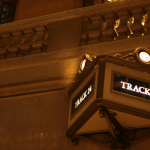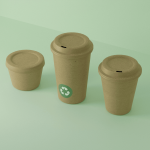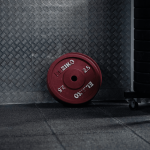What is Laaster?
Laaster is an emerging term with diverse meanings in various fields, including cutting-edge technology, building materials, digital branding, and next-generation systems. Although the term may be unfamiliar to some, its importance is rapidly growing, especially in discussions about real-time computing, automation, responsive design, eco-friendly materials, and brand innovation. In one context, Laaster refers to a lightweight digital architecture optimized for ultra-low latency and adaptive intelligence.
In another case, it describes a classic lime-based plaster, known for its durability and breathability. At the same time, Laaster is gaining increasing recognition as a brand due to its uniqueness and elegant phonetics. This article explores Laaster in all its aspects: its origins, technical implications, industrial applications, construction applications, branding potential, and future impact, and provides a comprehensive overview of why Laaster could be one of the most important concepts of the digital and design age.
Origin and Etymology of Laaster
The word “Laaster” is a modern coinage, likely a combination of terms like “latency” and “master,” suggesting a system that masters latency and operates with unparalleled speed and control. This meaning originated in the technological world, as systems needed to respond more quickly to user input, data changes, and real-time environmental cues. Alternatively, Laaster could derive from “plaster,” the ancient building material, linking it to centuries-old craft and architectural techniques.
Historically, lime plasters were essential to the preservation of historic buildings, providing both structure and decoration. The dual meaning of this term—engineered precision and material strength—makes Laaster unique in its breadth and depth. Whether in intelligent systems or decorative arts, the essence of Laaster is based on efficiency, adaptability, and timeless functionality.
Laaster in Technology
In the technology world, Laaster refers to a system design pattern or framework optimized for low-latency responsiveness and context awareness. Unlike traditional systems based on fixed rules and centralized processing, Laaster-based systems leverage edge computing, real-time analytics, in-memory processing, and machine learning algorithms to dynamically adapt. At its core, a Laaster system is designed to deliver microsecond responses while learning from its environment and evolving accordingly.
These systems are typically based on microservices, lean architectures, and event-driven models. They prioritize user-centric automation, meaning that user behavior directly influences system behavior. Whether real-time trading platforms, AI-based SaaS tools, or responsive mobile apps, Laaster principles ensure smooth, intelligent, and lag-free operations. Distributed processing on local servers (edge nodes) also reduces dependence on centralized infrastructure, further improving speed, data protection, and system stability.
Laaster Applications in Modern Industries
Laaster-based technology is applicable across various industries thanks to its scalability, efficiency, and real-time adaptability. In the healthcare sector, wearable health monitors and diagnostic tools based on Laaster principles enable real-time patient monitoring and emergency alerts without the delays caused by cloud-based data transmission. These systems help immediately detect critical conditions such as cardiac arrhythmias or blood sugar spikes.
In the financial sector, high-frequency trading firms use Laaster-like frameworks to process millions of data points in milliseconds and execute ultra-fast trades, giving them a competitive advantage. In the automotive industry, autonomous vehicles use Laaster principles to process environmental data and make real-time driving decisions. For example, detecting a pedestrian crossing or interpreting a stop sign is done without delay, which is crucial for safety.
In the retail sector, Laaster technology helps companies personalize the shopping experience by analyzing shopper behavior in real time and offering targeted recommendations. SaaS platforms also use Laaster-based systems to ensure seamless collaboration, real-time editing, and real-time data synchronization among users worldwide. These widespread applications demonstrate that Laaster is not limited to a single domain but offers cross-industry benefits.
Laaster in Construction and Decorative Arts
In its traditional form, laaster is a building and finishing material made from a mixture of lime, sand, and water. This natural mixture is used to plaster walls, create artistic structures, and restore historic buildings. One of its greatest advantages is its breathability, which allows moisture to pass through walls without causing mold or rot.
This makes it ideal for older buildings and green construction. Today, several types of it are used: gypsum-based it is typically used for smooth interior surfaces; cement-based it is durable and moisture-resistant, making it perfect for exterior applications; polymer-modified laaster offers greater adhesion and flexibility for complex structures; and fast-setting laaster is used when time is of the essence. Artists also use laaster for sculptures and wall art due to its malleability and durable finish.
The renewed interest in natural and sustainable building materials has put Laaster back in the spotlight for both functional and decorative purposes. It is now considered an important component of green building initiatives around the world.
Laaster as a Brand Identity: The Power of the Name
As a brand name, “it ” is gaining increasing traction among startups and digital platforms thanks to its clear sound, modern spelling, and versatility. It stands out in a competitive market with many overused or registered domains. A name like it is short, memorable, and pronounceable worldwide—ideal for tech products, fashion brands, wellness brands, or digital agencies. In the tech sector, Laaster could represent an AI product, a task manager, or an IoT device.
In the fashion industry, it could be the name of a sustainable luxury brand. In marketing and the creative industries, it sounds like an innovative design agency. The flexibility of the name allows it to grow with the brand across different industries and products. Furthermore, its uniqueness improves SEO, social media, and trademark rankings. This makes it a strategic choice for entrepreneurs seeking brand longevity and global reach.
Advantages and Disadvantages of Laaster Technology and Materials
It offers numerous advantages. In the technology space, it offers extreme responsiveness, scalability, and intelligent automation, enabling systems to become faster and smarter with minimal human intervention. In the construction space, it offers durable, breathable, and environmentally friendly surfaces. As a brand identity, its uniqueness ensures high recognition and low competition in search rankings. However, it also presents disadvantages. Technological laser systems can require large upfront investments in infrastructure and edge computing capacity.
Teams unfamiliar with microlatency architectures or real-time system design will need to familiarize themselves with the topic. In the construction space, it materials may not be widely available in some regions, and expert application is required to avoid cracking. From a brand perspective, initial awareness may be low, as Laaster is not a dictionary, requiring additional marketing efforts to educate the target audience. Finally, like any data-driven system, technology-based load balancing platforms must be properly secured to prevent the exposure of sensitive data. Despite these challenges, the advantages often outweigh the disadvantages, especially for forward-thinking organizations.
How to Choose the Right Laaster for Your Project
Choosing the right type of it depends on your project goals, whether you’re a contractor, software developer, or brand designer. For construction projects, first consider your environment. Cement-based it is best for wet areas. For interior use, gypsum that provides a smoother finish. If you need fast drying, choose fast-setting Laaster. For decorative work, polymer-reinforced versions offer better control and adhesion. Developers looking to build a it -type platform should consider system requirements: Does the product need real-time responsiveness? Is edge computing required? What type of user behavior data will be used for feedback loops?
Choosing the right architecture (microservices, event-driven, or serverless) can have a critical impact on your success. If you’re a business owner and choose “it ” as your brand name, first secure the domain and then define your brand message. Does your brand represent speed, sustainability, luxury, or intelligence? Adjust the tone of your logo, color palette, and website design accordingly. Analyze your competition and create SEO-optimized content for your niche to increase your visibility. Whether you’re mixing plaster or developing digital systems, Laaster should be chosen strategically for optimal results.
The Future of Laaster: What Does It Hold?
The future of it looks extremely promising. In the tech world, we can expect the rise of that platforms, which allow companies to integrate real-time responsiveness into their applications without having to develop them from scratch. More and more industries will adopt Las Vegas-based frameworks to facilitate smarter decision-making, especially in automation, healthcare, and finance. Certifications that evaluate systems based on their resilience to latency and adaptability could also become standard, helping teams assess performance. In the building materials sector, new eco-friendly it variants could emerge, for example, smart plasters that change color based on humidity or mixtures made with recycled materials to promote sustainability.
It is already being tested as a brand by new startups. With this unique positioning, Laaster has the potential to establish itself in various industries. The combination of traditional techniques and futuristic technologies makes it a bridge between the past and the future. The more innovators embrace this concept, the more it will become not just a tool, but the foundation for the next generation’s progress.
Final Thoughts
Laaster is important today because it embodies the combination of speed, intelligence, sustainability, and design. In technology, it lays the foundation for frictionless systems that respond instantly and adapt continuously. In construction, it represents the return to breathable, robust, and eco-friendly materials that stand the test of time. Regarding branding, It offers startups the rare opportunity to have a modern and meaningful name.
The world is moving toward immediacy: people expect things to work quickly and intelligently. It meets these requirements in all areas. Whether you’re a contractor, programmer, designer, or entrepreneur, it offers principles and tools that enrich your craft. A comprehensive understanding of it enables you to make informed decisions, implement innovative solutions, and lead your industry. As digital ecosystems become increasingly complex and design priorities evolve, it will continue to shape the landscape in subtle yet impactful ways. Adopting it today will ensure your relevance in the future.










